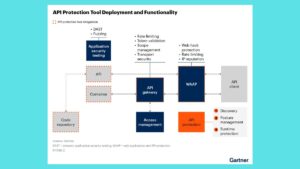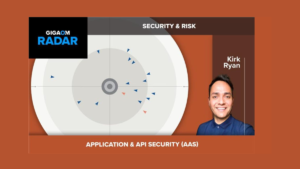The Future of Employee Onboarding: Digital Solutions for a Seamless Experience

Employee onboarding has evolved dramatically in recent years, particularly as remote work and digital-first solutions have become integral to the workplace. Traditional onboarding—often involving paper documents, in-person meetings, and one-size-fits-all processes—is being replaced by digital solutions that enhance efficiency, personalization, and employee engagement.
In this blog, we’ll explore how digital onboarding tools are reshaping the onboarding experience, why they’re essential for today’s workforce, and what the future holds for companies looking to offer a seamless, efficient onboarding process.
1. The Changing Landscape of Employee Onboarding
Employee onboarding is more than just a checklist of tasks for new hires. It’s the foundation of an employee’s experience with a company and plays a crucial role in their long-term engagement, productivity, and retention. In a competitive job market, effective onboarding is vital for attracting and retaining top talent.
However, the rapid adoption of remote and hybrid work has fundamentally changed how companies approach onboarding. Digital onboarding solutions have become essential to ensure new employees feel supported and connected, regardless of where they’re located.
Why Digital Onboarding Is Essential:
- Remote and Hybrid Workforces: As work becomes more decentralized, companies must offer onboarding processes that cater to employees working from various locations. Digital solutions ensure consistency and accessibility, whether employees are in the office or working remotely.
- Efficiency and Scalability: Traditional onboarding methods can be time-consuming and difficult to scale. Digital platforms automate many of the administrative tasks associated with onboarding, allowing HR teams to onboard employees more quickly and efficiently, even across multiple locations or time zones.
- Employee Expectations: Today’s workforce is increasingly tech-savvy and expects modern, user-friendly experiences from the start. Digital onboarding solutions offer intuitive platforms that align with these expectations, enhancing the overall new hire experience.
2. Key Components of a Digital Onboarding Experience
Successful digital onboarding solutions incorporate several key elements to create a comprehensive and engaging process. Here’s how modern digital onboarding platforms are designed to ensure a seamless experience:
2.1 Automated Paperwork and Compliance
One of the most time-consuming aspects of onboarding is completing and processing paperwork. Digital onboarding platforms allow companies to automate much of this process by offering paperless forms that can be completed online. This not only saves time but also reduces the risk of errors or missing documents.
- Digital Signatures: New hires can sign contracts, tax forms, and other necessary documents electronically, streamlining the onboarding process and ensuring legal compliance.
- Compliance Tracking: Automated systems ensure that companies remain compliant with local laws and regulations, tracking required documentation and alerting HR teams when something is missing.
2.2 Personalized Learning and Development Plans
Learning and development are critical during the onboarding process, helping new employees understand their role, the company’s culture, and key workflows. With digital onboarding platforms, companies can create personalized training plans tailored to each employee’s role, experience level, and learning style.
- Learning Management Systems (LMS): Integrated LMS platforms allow companies to create interactive training modules, quizzes, and assessments. Employees can complete these at their own pace, making the onboarding process more flexible and engaging.
- Microlearning: Many digital onboarding platforms offer microlearning—bite-sized lessons that are easy to digest and don’t overwhelm new hires. This approach ensures that employees can retain information and apply it effectively.
2.3 Virtual Onboarding Tools and Gamification
With the rise of remote work, companies are leveraging virtual tools to help new employees feel connected to their team and the organization, even if they’re working from different locations.
- Virtual Introductions and Team Building: Video conferencing tools and virtual meet-and-greets allow new hires to connect with their colleagues and managers. Some platforms offer virtual icebreakers and team-building activities to foster a sense of belonging from day one.
- Gamification: Digital onboarding platforms often use gamification techniques, such as points, badges, and leaderboards, to make the process more engaging and interactive. New employees are motivated to complete tasks and learn about the company through a fun, rewarding experience.
2.4 Mobile-First Onboarding
Many modern onboarding platforms are designed with a mobile-first approach, ensuring that new hires can access onboarding materials anytime, anywhere, from their smartphones or tablets. This flexibility is especially important for remote and global teams, as it allows employees to complete tasks on their own time, regardless of location or time zone.
- Mobile Apps: Dedicated onboarding apps provide an intuitive, accessible experience for employees on the go. From signing documents to accessing training videos, everything can be managed from a mobile device.
- Push Notifications: Mobile onboarding platforms often include push notifications, reminding employees about upcoming tasks, deadlines, or scheduled meetings, keeping them on track throughout the onboarding process.
3. The Benefits of Digital Onboarding Solutions
The transition to digital onboarding isn’t just about convenience—it offers a range of benefits that improve employee satisfaction, streamline HR processes, and enhance business outcomes.
3.1 Improved Employee Engagement
Onboarding is a critical time for new employees to form their first impressions of a company. Digital solutions allow companies to create personalized, engaging onboarding experiences that help employees feel connected and supported from day one. This increased engagement leads to higher levels of job satisfaction and reduces turnover rates.
3.2 Faster Time to Productivity
Digital onboarding solutions help employees get up to speed faster by delivering training and resources in an organized, accessible way. Automation eliminates bottlenecks in paperwork and compliance, allowing new hires to focus on learning their role and contributing to the team more quickly.
3.3 Scalability for Growing Companies
As organizations grow, they need scalable solutions to onboard new employees efficiently. Digital onboarding platforms are designed to accommodate a growing workforce, whether a company is hiring locally or expanding globally. The ability to automate key tasks and deliver consistent experiences across locations is invaluable for scaling onboarding efforts.
3.4 Data-Driven Insights
Digital platforms allow HR teams to track the progress of onboarding tasks, monitor completion rates, and gather feedback from new employees. This data provides valuable insights into the effectiveness of the onboarding process, helping HR teams make improvements and tailor future onboarding experiences to meet employee needs.
4. The Future of Employee Onboarding: Emerging Trends
As technology continues to advance, the future of employee onboarding is likely to see even more innovation. Here are a few emerging trends that are set to shape the onboarding experience in the years to come:
4.1 AI and Machine Learning in Onboarding
AI and machine learning are being integrated into onboarding platforms to offer even greater personalization. These technologies can analyze data from a new hire’s profile, previous experiences, and learning preferences to create a customized onboarding journey that adapts to their unique needs.
- AI-Powered Chatbots: Chatbots can assist new hires by answering common questions, guiding them through tasks, and offering personalized support throughout the onboarding process. This enhances the employee experience while reducing the burden on HR teams.
- Predictive Analytics: AI tools can analyze onboarding data to predict which employees may need additional support, allowing HR teams to proactively address potential challenges and improve retention rates.
4.2 Virtual and Augmented Reality (VR/AR) in Training
Virtual reality (VR) and augmented reality (AR) are gaining traction as tools for immersive, hands-on training during onboarding. These technologies allow new employees to engage in simulations or real-world scenarios in a safe, controlled environment, enhancing learning retention and practical skills.
- VR Training Simulations: For industries like healthcare, manufacturing, or engineering, VR can provide new employees with realistic training experiences without the risks or costs associated with in-person simulations.
- AR for Remote Assistance: AR technology can provide remote guidance to employees by overlaying digital information onto their real-world tasks. This is particularly useful for technical onboarding, allowing employees to troubleshoot or perform tasks with virtual step-by-step instructions.
4.3 Continuous Onboarding and Integration
Onboarding is no longer a process that ends after the first few weeks. Many companies are embracing the idea of continuous onboarding, where learning, development, and engagement extend well beyond the initial onboarding phase. Digital platforms allow companies to maintain ongoing communication, offer training opportunities, and track employee progress throughout their entire tenure.
Conclusion
The future of employee onboarding lies in digital solutions that provide a seamless, personalized, and scalable experience. As companies continue to adopt remote and hybrid work models, these tools will be essential for creating engaging, efficient onboarding processes that set new hires up for success.
By embracing innovations like AI, mobile-first platforms, and virtual training tools, businesses can ensure that their onboarding processes not only meet the needs of today’s tech-savvy workforce but also drive long-term employee engagement, retention, and productivity.
As digital onboarding continues to evolve, companies that invest in these solutions will be better positioned to attract and retain top talent, foster a positive employee experience, and adapt to the ever-changing landscape of work.






